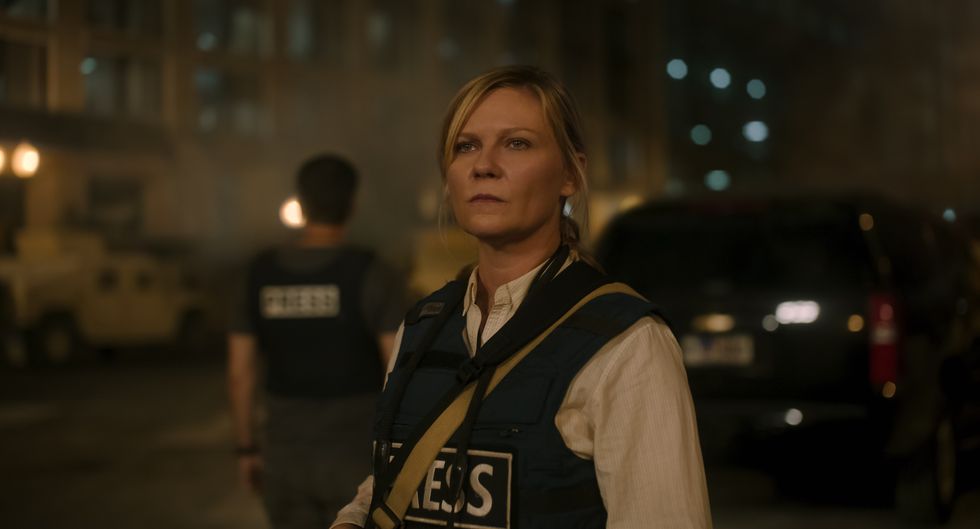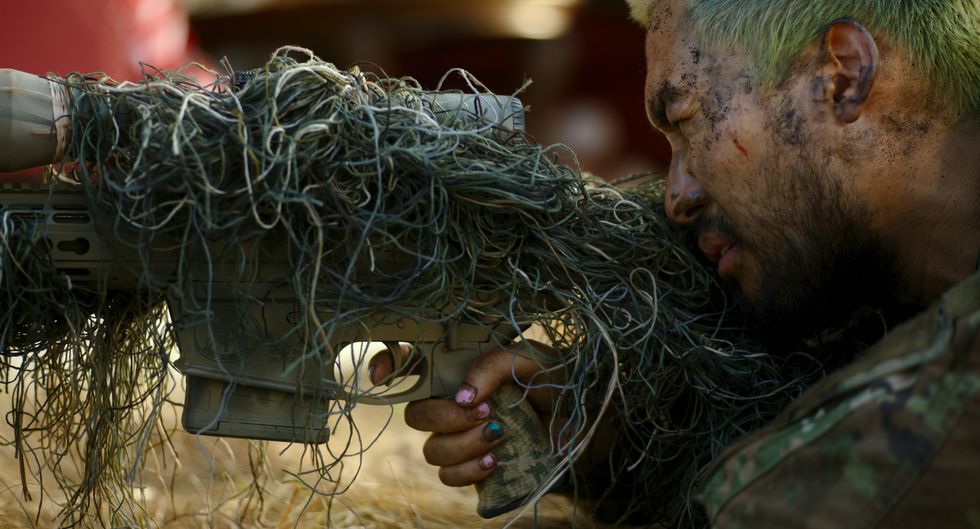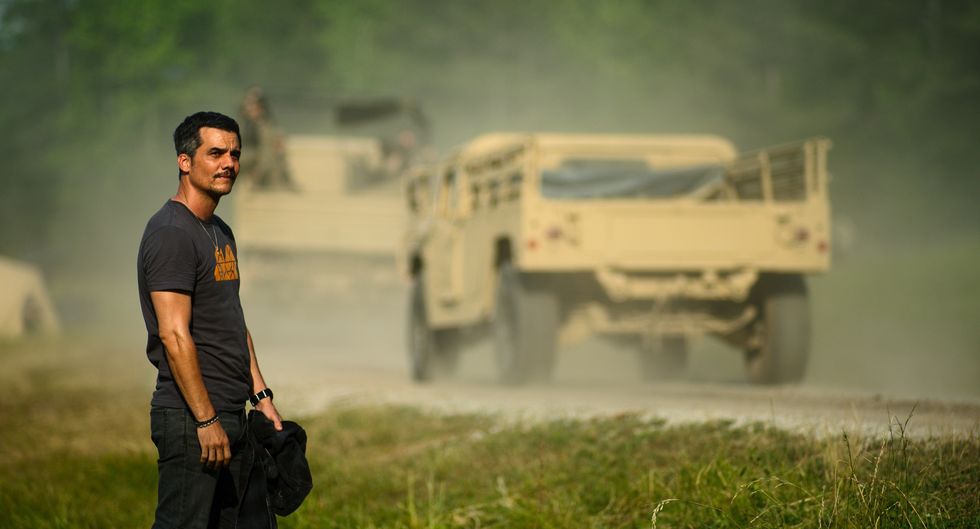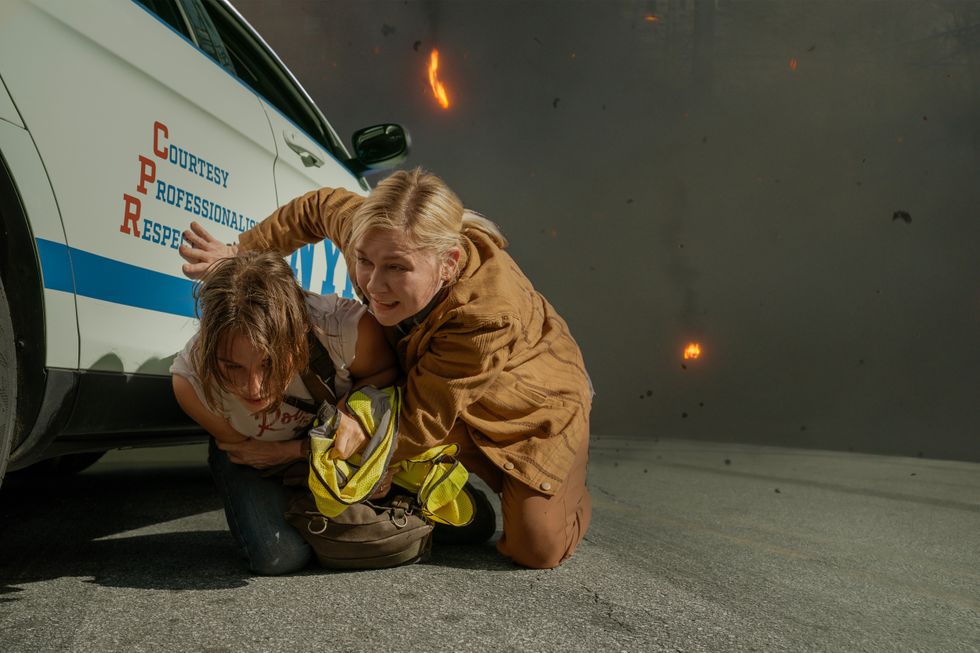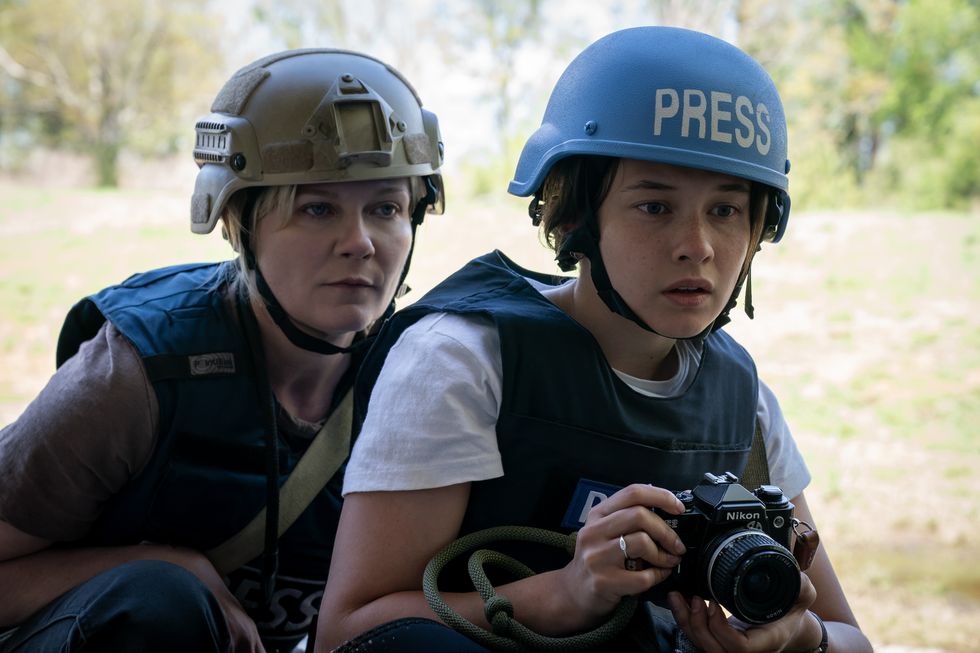What Do You Do With 400 Hours of Footage? Richie Mehta on 'India in a Day'
How one documentarian made a single film out of 16,000 submissions.

Toronto-based filmmaker Richie Mehta has directed two feature films in India (Amal, 2007 and Siddharth, 2013), but nothing could have prepared him for the undertaking of India in a Day. The ambitious documentary set out to gather and cull submissions of personal footage—taken with whatever technology available—from every corner of the vast continent and weave them together into a colorful tale with universal appeal.
The resulting film is a much deeper, richer, and more touching journey than you might expect from something created with user-generated content and backed by Google. It invites us in with structured parts of the day, like wake-up and get-ready, and visually excites us with thematic montages of mouth-watering foods and universal activities, like transportation. But the stories woven throughout sneak up on us, inserting real human drama and pressing social issues into the midst of the vibrant visual poem. A rickshaw driver waxes philosophical; a mother begs us not to differentiate between sons and daughters in terms of access to education; a restaurant provides a haven for transgendered employees.
“Doing documentaries in film school was the most valuable experience I could have had in screenwriting.”
Mehta suspects that the film’s success may have to do with India itself. "I keep wanting to explore different facets of that place through film," he said, "because it's a place where human drama is just right there in front of you. It's not hiding in any way. I think it's a place where we can really measure where we've come and where we're going."
No Film School spoke with Mehta on the afternoon of the film’s international premiere at the 2016 Toronto International Film Festival.
NFS: Why choose India for this project? Technically, it could have been done anywhere.
Richie Mehta: It has been done in a few other places. It was done in a film called Life in a Day, six years ago, which was the whole world—one day on Earth. It worked really really well. Since then, they've done a few: Japan in a Day, Britain, Italy, and now it's India. I think India is the first “developing country” they've done.
NFS: The themes felt universal, but which parts would you say were unique to India?
Mehta: Exactly. The meatier stories are not really about India. They're about life. They're about life and death, progress and humanity and where we're going, what it means to be alive, through individual stories and individual plights, in a way. I think what's Indian about it are the cultural nuances that we present. The aesthetics are very Indian. Some of the humor is Indian, but then that also exports. I think it's funny. I think, really, the film overall is about humanity.

NFS: Being a director for a film like this means something kind of different than it does for other types of films, even docs. What did you see as your primary role in the film?
Mehta: My primary role was to watch, to identify what I instinctively feel is important, extraordinary, or relevant, and then start to create a tapestry where all of that can work together, in conjunction with the editor.
NFS: How much footage was there in the end?
Mehta: About 400 hours. 16,000 submissions.
NFS: Holy moly.
Mehta: A submission could range from a two-second clip to a two-hour clip.
NFS: How did you get the word out in the first place?
Mehta: We did a lot of press and media. Google was involved in the project, so if anyone in India clicked on Google, it came up on their homepage. Some of my friends and colleagues in India who are really well-known directors in the film business did call-out videos with me. It was kind of a nine-day blitz.
“We had 15 people logging the footage, so they would watch everything and then rate the footage, and the stuff that was rated high would come to us.”
NFS: And then you got a blitz of material. Did you watch it all?
Mehta: No, I probably ended up watching half of it, personally, and the editor probably watched half of it. We had 15 people logging the footage, so they would watch everything among them and then rate the footage, and the stuff that was rated high would come to us. I would always dip into the lows just to make sure nothing was lost, and then we would evolve that evaluation system so that we were honing in on what is good or what was lost.
NFS: How long did just the honing down process take?
Mehta: That was about three months, every day, all day, and then we got into the meat of actually trying to assemble.
NFS: Do you remember any great clips that stand out that you couldn't fit in the final film?
Mehta: There's lots of beautiful stuff that didn't make it. Ultimately, the stuff I really, really wanted to be in the film is in the film. At some point, we have to make the call. Did those other extraordinary clips fit into the big picture of what we were doing, or were they maybe saying something that's already been said by somebody else and therefore we just have to make the call on what works aesthetically with the movement of the film? The film, at a certain point, takes a life of its own, and then it starts to dictate what works great and what doesn't.

NFS: On a related note, it's such a big country. Why try to do the whole country instead of, say, Bombay? Were there regions that you had to leave out?
Mehta: I really tried to include as many regions as were submitted. I think there was one state we didn't receive anything from. We received stuff from the surrounding regions, so it still became indicative. It was very important to me because in a place like India, you do have a lot of marginalized areas and cultures and languages.
You know you're going to get the most submissions from Delhi and Bombay. Sometimes, we received one clip from a place that's not really as well traveled, and I was adamant about putting it in.
NFS: Is there a plan to do something with the additional material?
Mehta: Not yet, but that may change in time. The contributors who gave footage have licensed [it] to us. They can do whatever they want with it themselves. We don't want it to be that they give it to us and it's lost. They can post it. They can send it. They can re-edit it.

NFS: Did you decide ahead of time what the sections of the film would be, or did that evolve with the footage?
Mehta: It evolved. We knew we wanted to go from midnight to midnight. Life in a Day had some scenes like this, waking up and going to work, but we felt like we're not going to do what's already [been] done. We'll see what the footage is telling us. And then when we started to see all the footage of people waking up, I thought, "there's something potentially really special about this." They were going to work, and they thrust into the energy of that, and then there’s a calm that comes after lunch.
We figured these are really interesting dramatic beats that we can use for the thrust of the film, like moments when things are moving, and then things calm and we can be introspective for a moment, and then they move again. It ended up working really well. I guess you could say it's the rhythm of life.
"There is such a strong relationship between screenwriting and documentary editing."
NFS: Given that you already had intimate familiarity with the country, what surprised you from the submissions?
Mehta: The sense of humor surprised me. I'm always reminded how funny people can be and how much levity they can bring to situations in India despite their own tragedies. I was surprised at the neutrality of some of the gaze of the footage that we received, despite the fact that things were so tragic. Oh the other hand, I was surprised at how life-affirming some of it was.
I was probably most surprised about not receiving any footage from what you and I would call the economically wealthy.
NFS: I'm shocked. I would think they have the most access to filming and technology. What do you think that's about?
Mehta: My personal opinion? They're happy with the status quo. The movie wasn’t supposed to become a political statement; it was just presented to people as “a day in the life.” But that statement was made. I didn't have to make it. Then, it begs the question: who does have something to say, and why? What is being said?

NFS: Is there anything in particular that you would say directly to other filmmakers about your process?
Mehta: I've been working up until this point in narrative fiction filmmaking, which meant taking years to write the script, putting it together, and shooting it. Obviously, this is a different process, but I started off by doing documentaries in film school, and that was, to me, the most valuable experience I could have had in screenwriting. There is such a strong relationship between screenwriting and documentary editing. That training was probably what allowed me to at least have the confidence to start this project.
"Everything was shot at a different frame rate."
NFS: Speaking of editing, you must have had all different types of footage, from all different types of cameras. How did you deal with that in post?
Mehta: [Conforming] was a nightmare. Everything was shot at a different frame rate. The iPhone, amazingly, changes frame rate while you shoot, on the same clip, because that’s how it deals with light change. You have one clip, between the start and stop, it would go to 14 frames, 16, 24, 60 to 40. To find a spot to land on for a conform—and forget about all the variety that you're getting—it was a nightmare.
I don't actually know how they did it. We had a team of assistant editors. Basically, the only thing we could do is curate, change the in and out points, and clean up the sound. We didn't want to alter the meaning of it. Once we had everything, we did a color correction, but we didn't have to do much.
NFS: Some of the footage looked very high-end.
Mehta: Yeah, I think people shot some of it on motion picture cameras. I haven't confirmed this, but my theory is we had a lot of amateur DPs and camera assistants in the Indian film industry who probably took this opportunity to take their gear and go back to their home villages and shoot incredible footage in very rural areas.
NFS: I’m curious about the relationship with Google. What's their interest in the project? Was this film considered branded content?
Mehta: I think Google did this because they can. You can't do a project like this without power like [Google] behind it. The footage was uploaded by them, the homepage was hosted by them. They didn't exercise any editorial control over it. They allowed us, as a team, to do what we thought was right with the footage. They were very respectful about that. The end goal of this film is that it will exist on YouTube for free.

